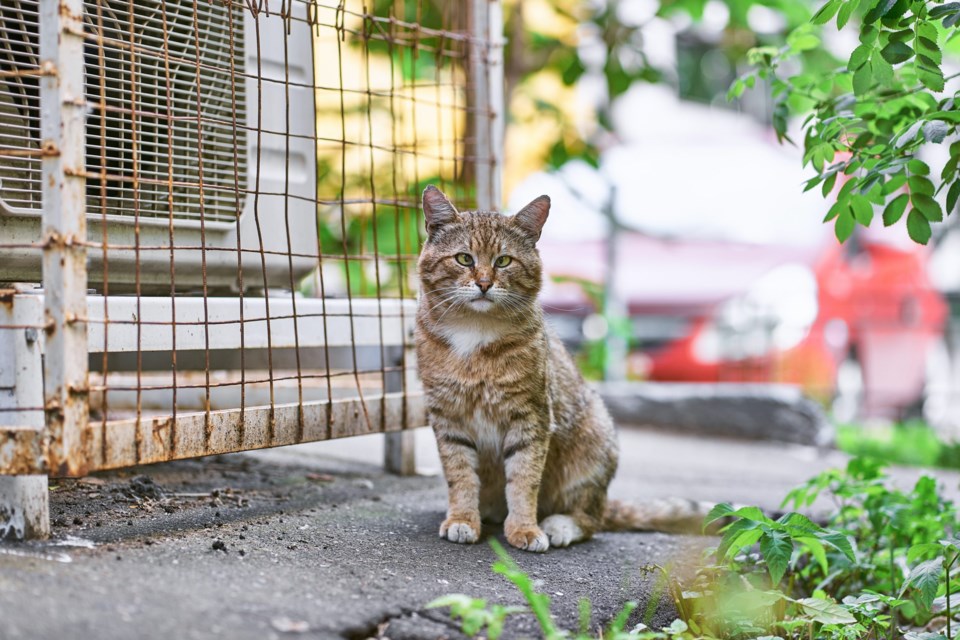Tensions are flaring in Brooklyn neighborhoods over cat care, with rescue organizations urging cat lovers to practice polite community relations — for the sake of the kitties.
Increasingly, Brooklyn residents and rescue organizations are turning to social media to share experiences of rescue operations that rub people the wrong way.
Earlier this month, Facebook user Alero Barret went to the Bedford-Stuyvesant community page to vent her frustrations, after spotting a woman putting a cat shelter over her gate and into her backyard.
She said, no matter how many times she asked the rescuers to stop, she was constantly finding cat food cans shoved under her gate. When she put mesh to block it, the mesh was cut.
"I’m beyond mindblown by the level of arrogance," Barrett said. "This is very clearly a private yard and a lived in property so what would posses this woman to think this was acceptable I can only guess is her privilege."
The post prompted calls for Barrett to file a trespassing complaint, call the police, or even try to chase the cats away.
This is why it's so important to put community trust first when doing a rescue, Flatbush Cats, a cat rescue and adoption organization, said in a recent Instagram post.
The post involved a litter of kittens that needed medical care, but which lived on private property. The owners were at first responsive to helping, but later stopped answering calls and texts, and zip-tied their gate.
While these situations are difficult for cat lovers, Flatbush Cats urged rescuers to think of the big picture, and to move with patience and empathy.
"Flatbush is a predominantly Black and Caribbean neighborhood with a long history of white people 'rescuing' their cats without speaking to anyone," the organization said.
"In addition to myriad ethical and legal issues, taking cats like this costs many more lives than it saves. When any one rescuer violates a community's trust, it becomes much harder for all rescuers to sterilize and support cats in that area."
Right now, the organization is making sure that getting to know neighbors happens before the traps come out.
The news comes after BK Reader last year reported on the story of a missing Crown Heights kitty that prompted claims from Brooklynites that a rising interest in helping strays had seen their pets “cat-napped” by people who thought they were doing the right thing.
Rachel Selekman, member of Neighborhood Animal Rescue Network-Central Brooklyn (NARN-CB), told BK Reader she would never put a shelter on someone's property without asking them, or trap on private property without permission.
Often rescuers do come across situations where sick cats, or cat colonies that need to be neutered, are staying on private properties. In these cases, communication is key, Selekman said.
"We'll go check out a site, chat with neighbors if they are around, see where the cats are located, if there's access, etc." If the residents aren't around to speak to, Selekman said flyering was a helpful tool.
The flyer might say that you're trying to trap cats to get them to the vet and are seeking help, and should include your contact details. You can leave them at the homes where the cats in need are living.
"It's often successful as the people living there know the cats and often want to help them, but don't know how," Selekman said.
Afterwards, rescuers should keep community building by keeping neighbors updated about when they are trapping, how the cats are doing, and when they're being returned.
5 Tips to Be a Responsible Community Rescuer
1. Look at information online on Bideawee's Feral Cat Initiative (FCI) and Neighborhood Cats's website, as well as reading about community relations at Alley Cat Allies.
2. Get more information from whoever alerted you to the cats. Ask if they know their neighbors and find out if there are any cat feeders in the area, and what their sense is of what the residents think about the cats.
3. Check out the location and talk to anyone who is around.
4. Drop flyers that include info that you're trying to get local cats to the vet and are looking for feeders, assistance, info. Include your contact details.
5. Keep neighbors and community members informed about your plans.




